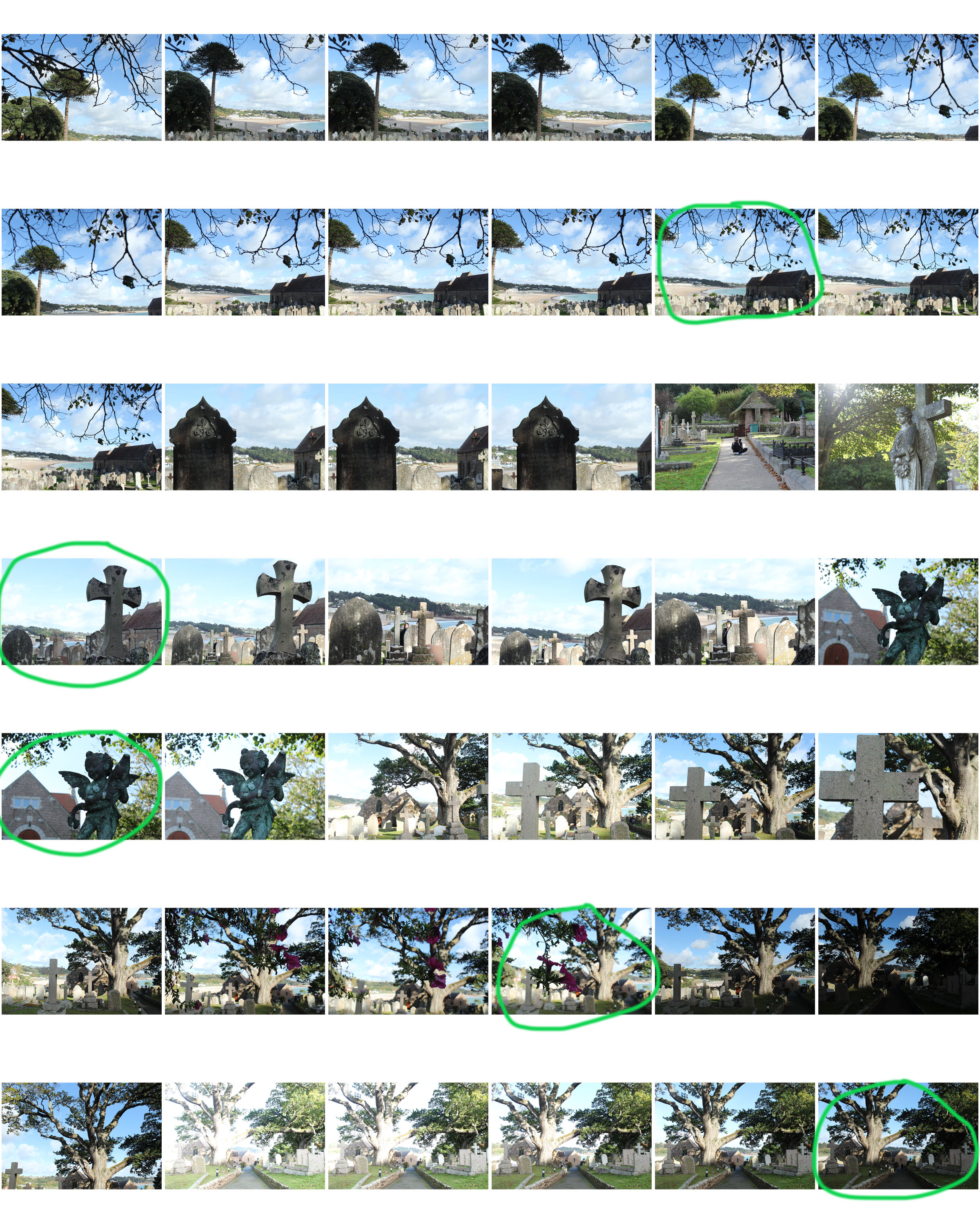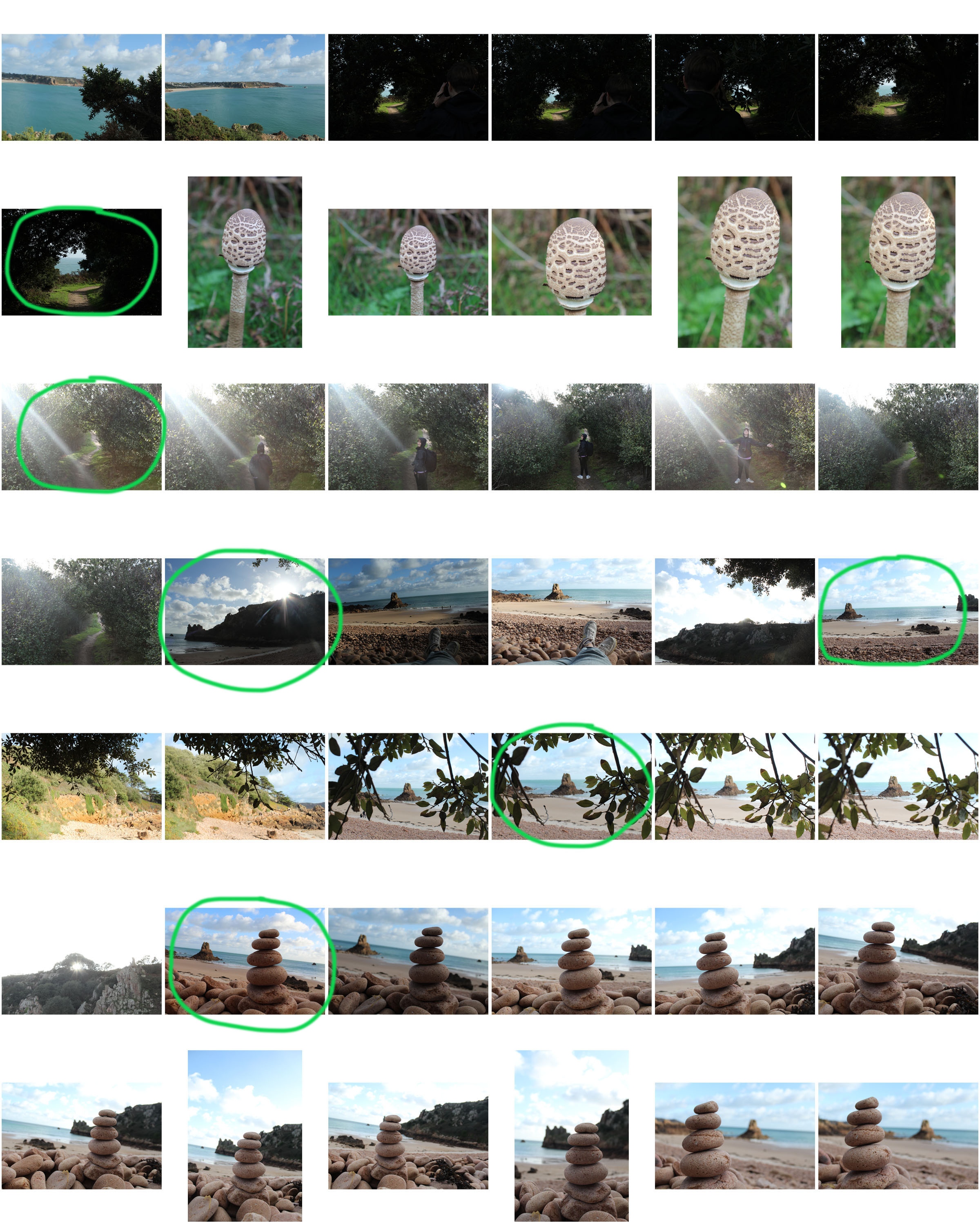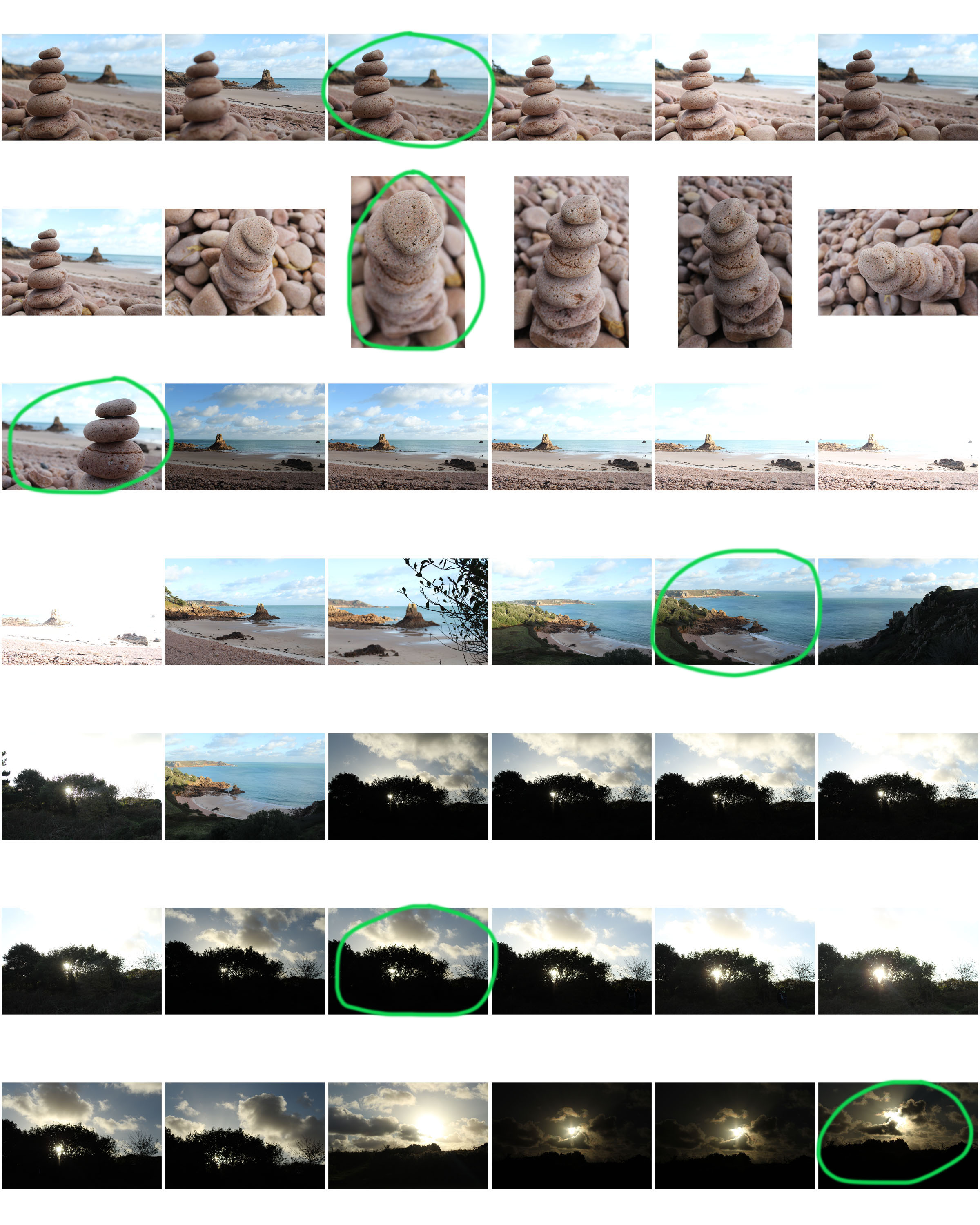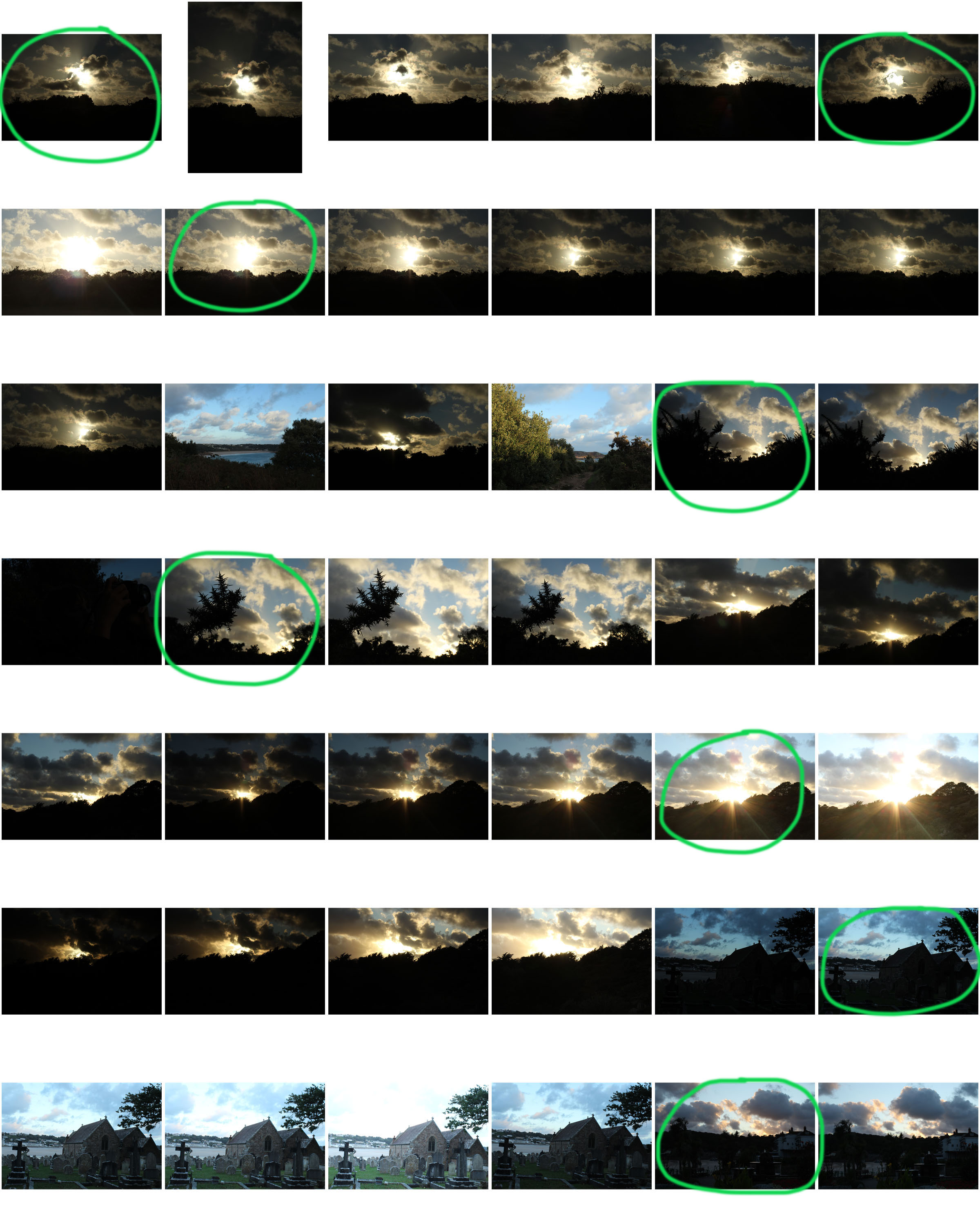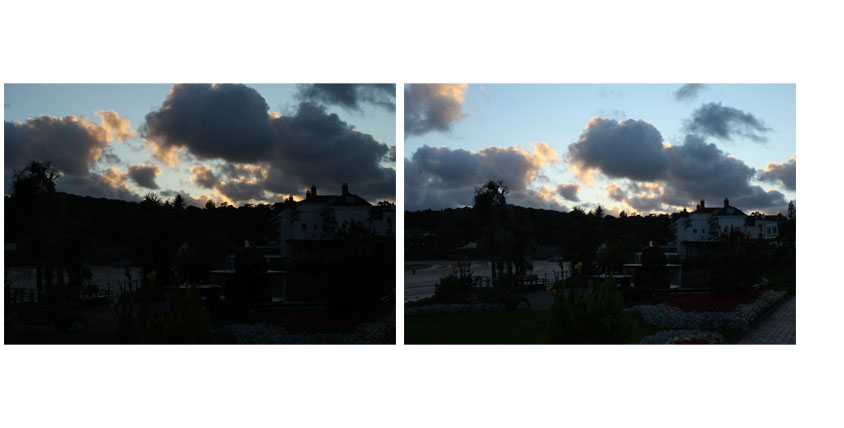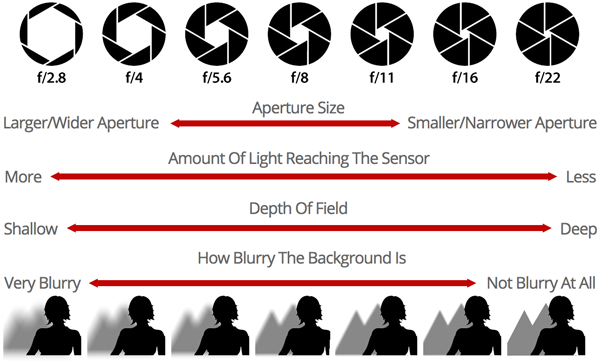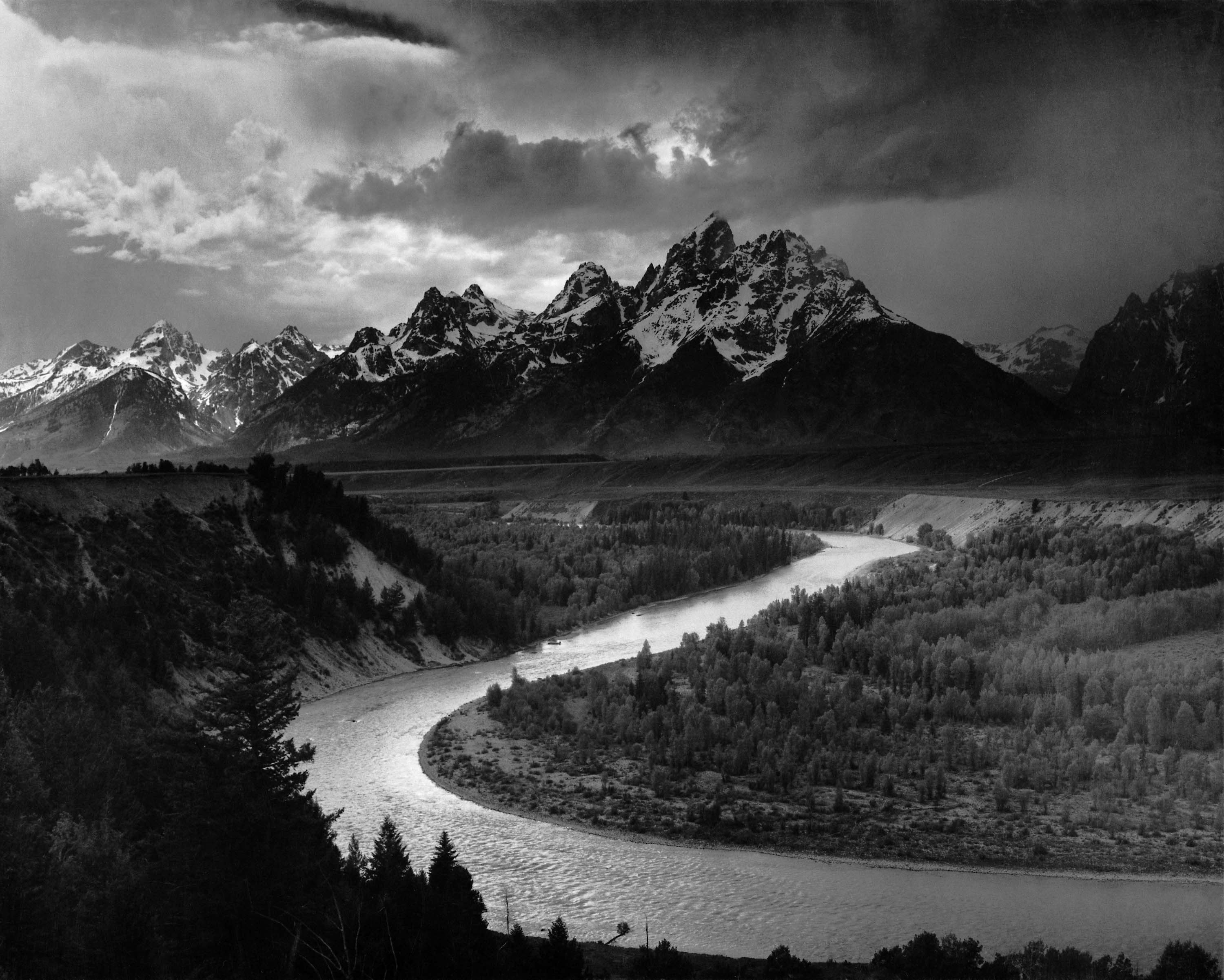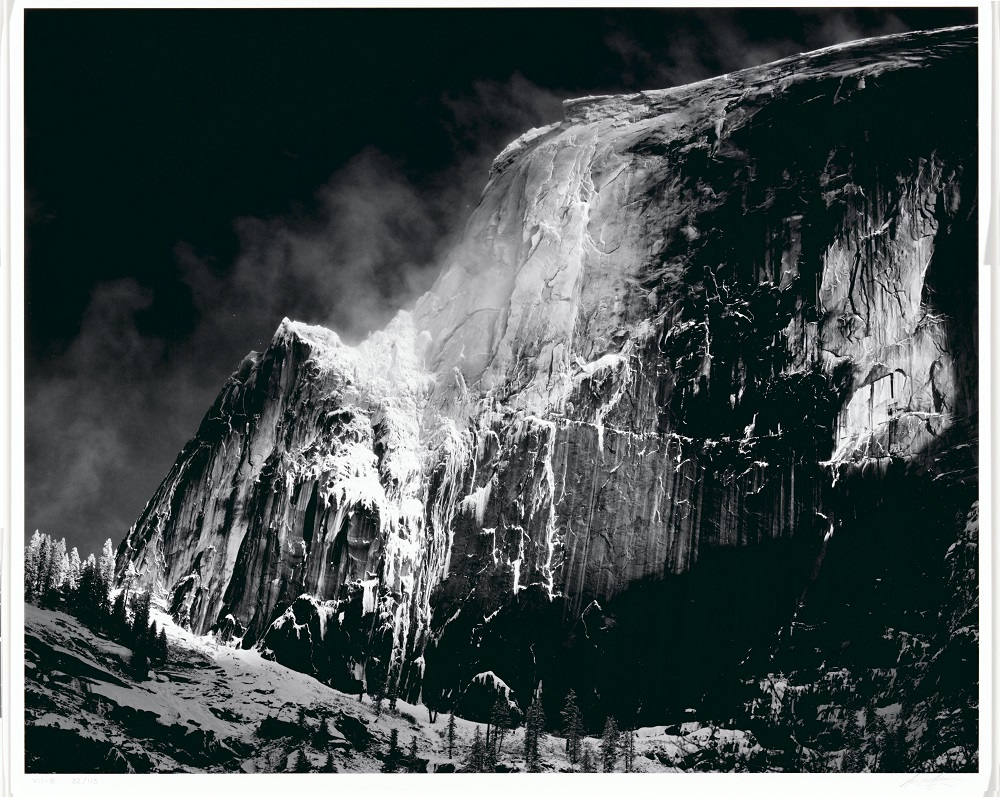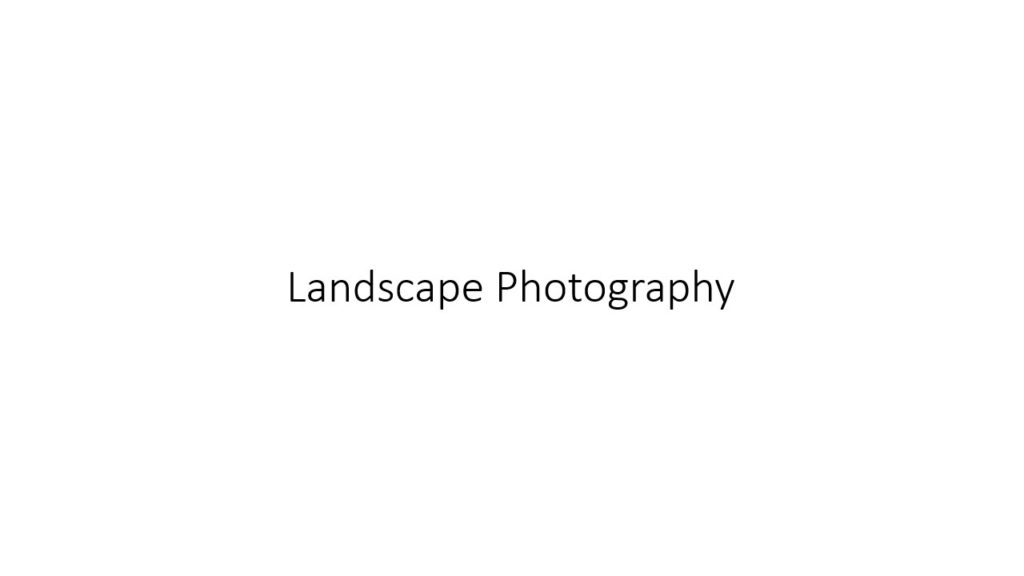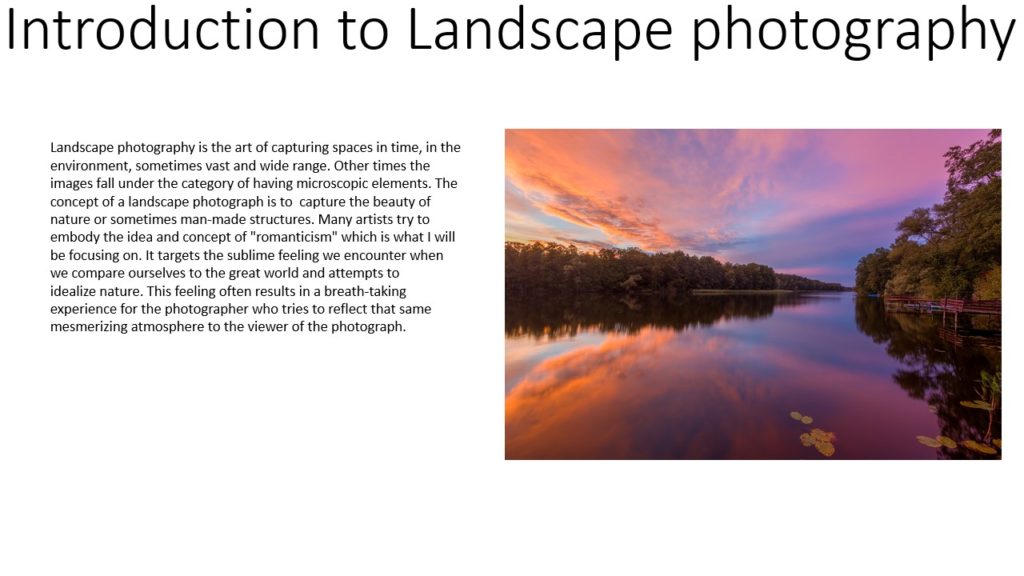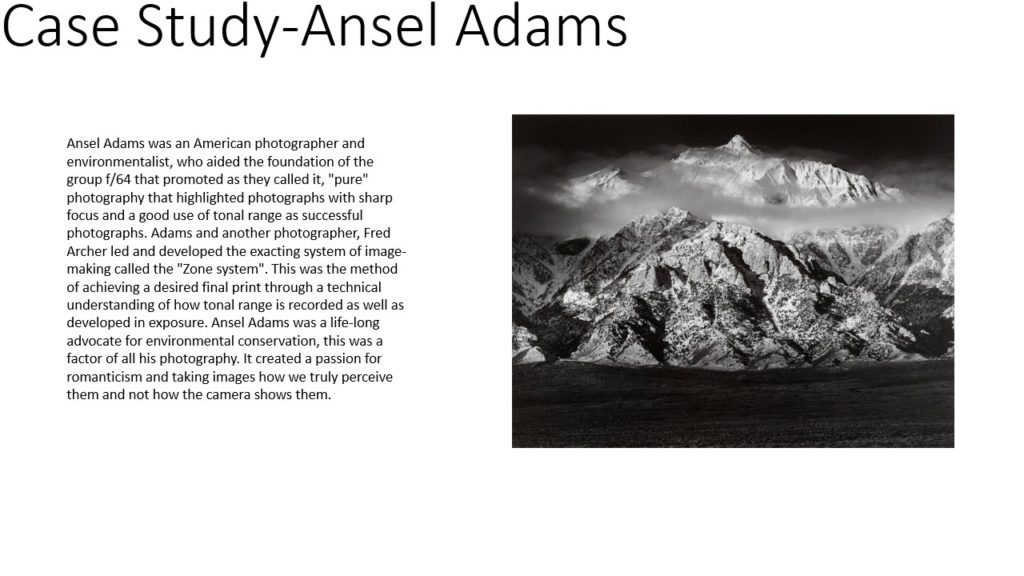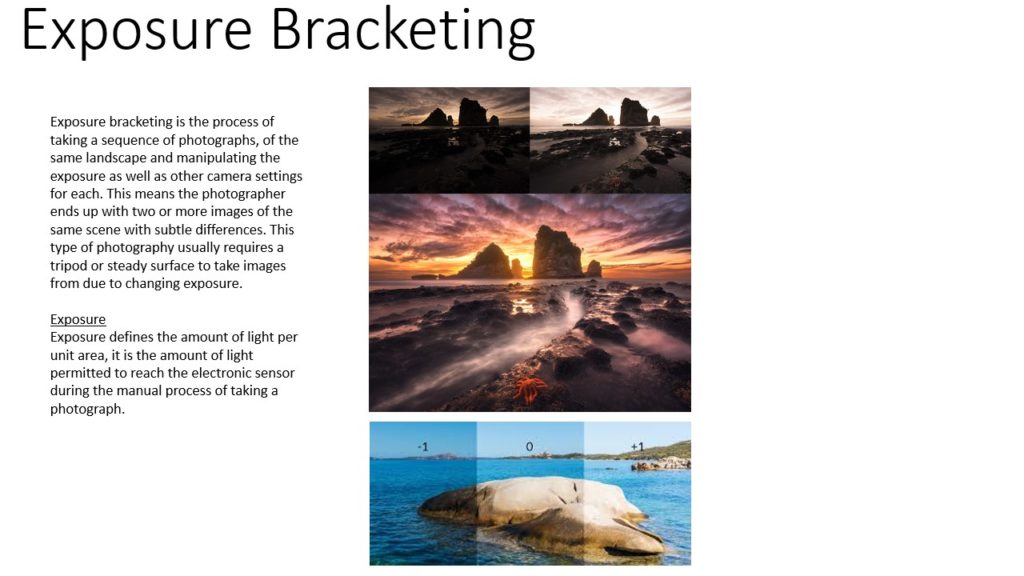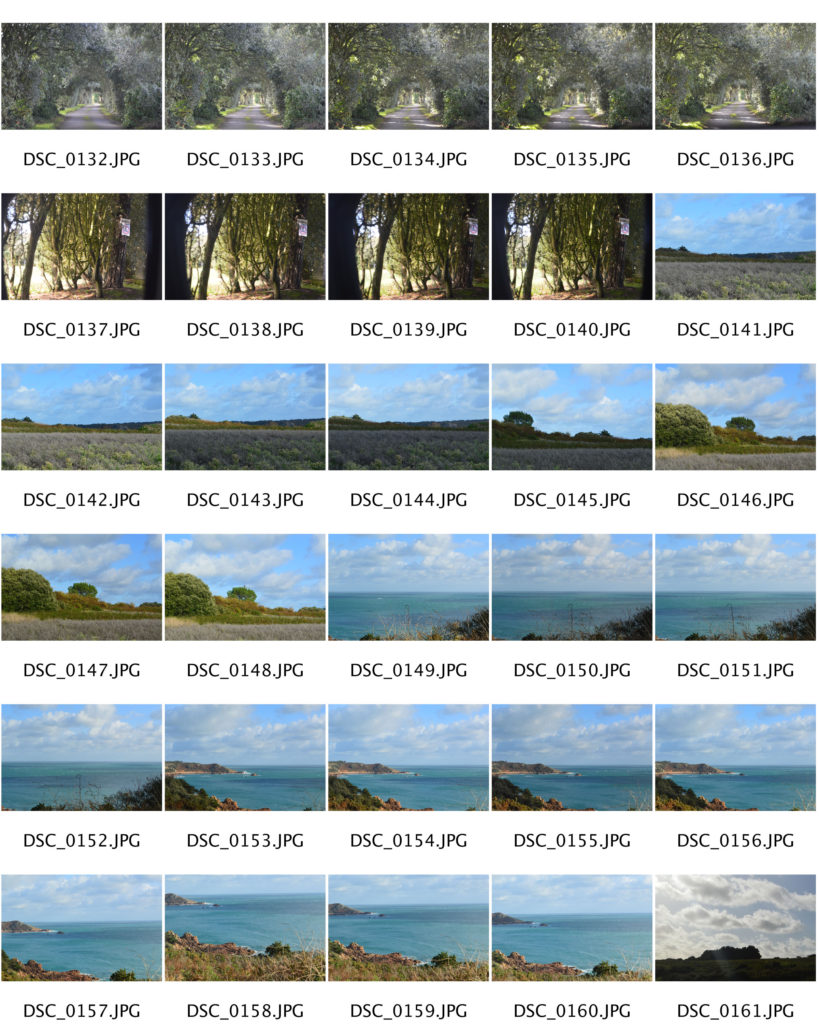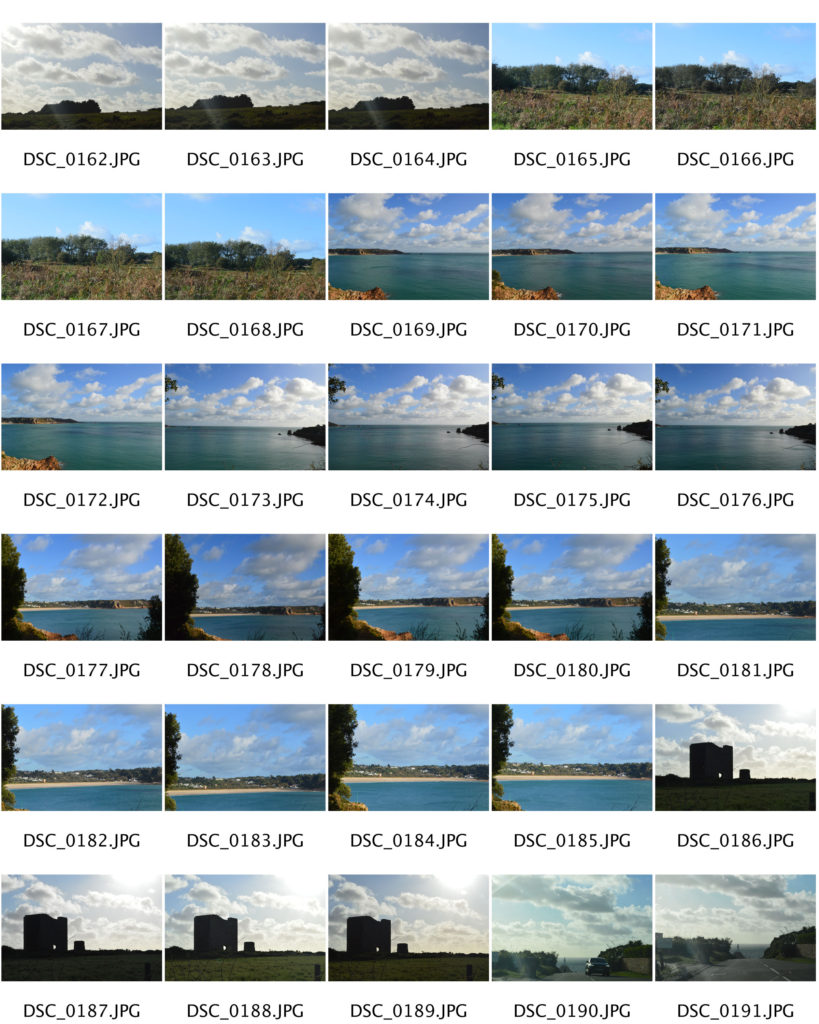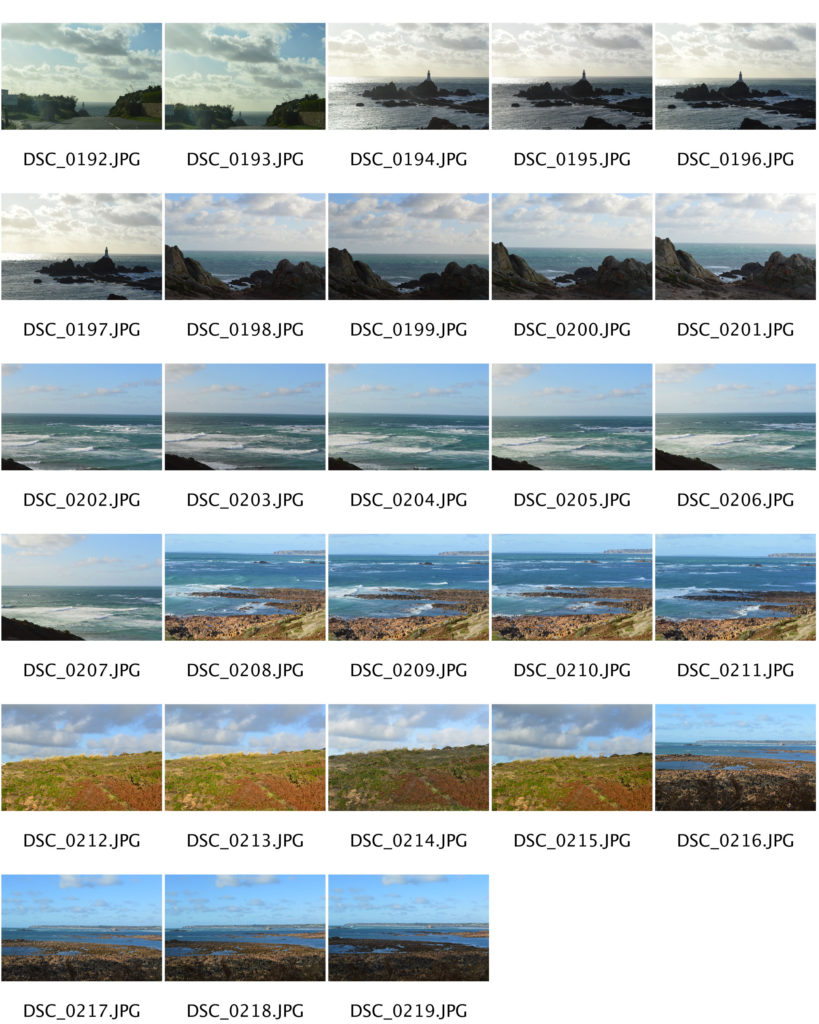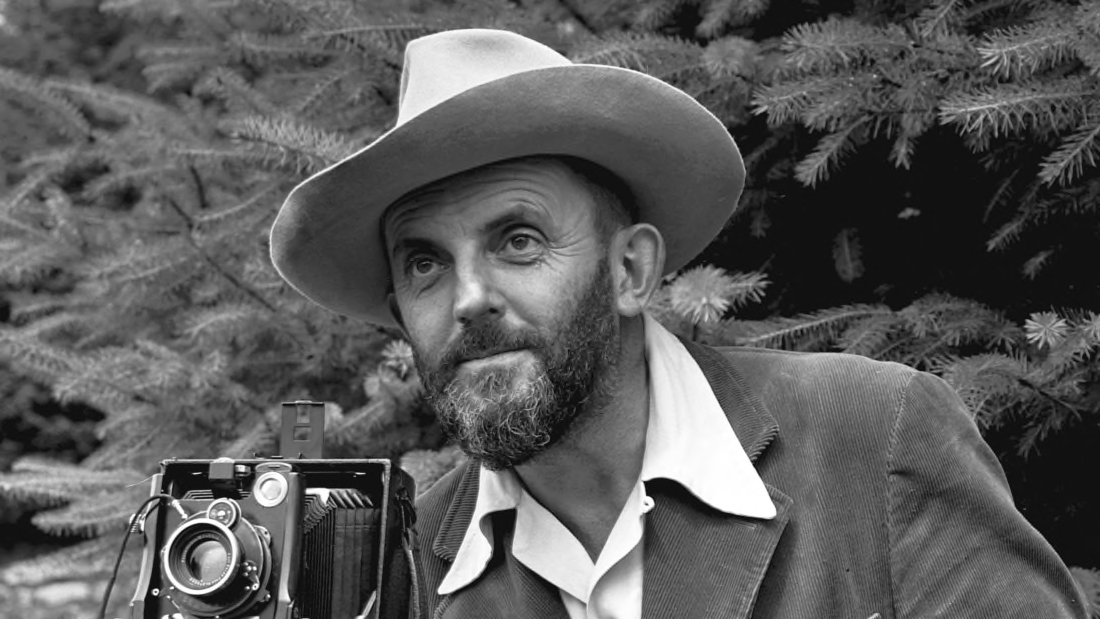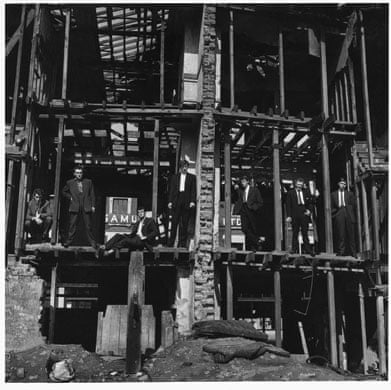The term “exposure bracketing” means to merge variations of the same image together, which have been under-exposed and over-exposed, to create an image that has been perfectly exposed.
To successfully carry out exposure bracketing, the photographer needs a tripod to keep the exact same image angle throughout, or the final image will become blurred.
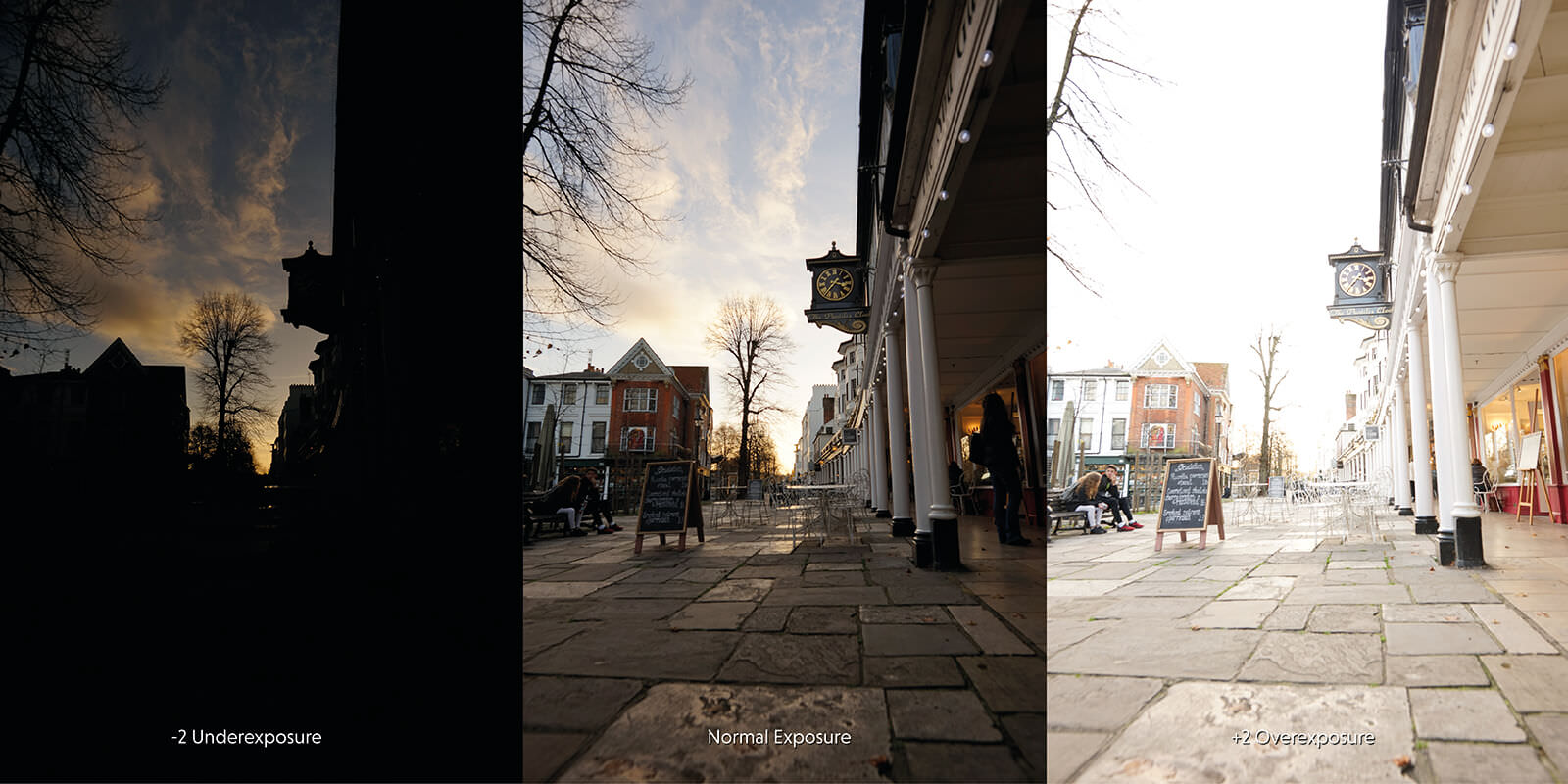
To begin with, the photographer would frame their image how they like and adjust the exposure to a normal level for the setting, usually 1/60. Then they would take the exact same image (hence the need for a tripod) but the exposure would be decreased by half, so 1/30. If the photographer feels that it is necessary they can go a step further and take the same image again with half the exposure, in this case 1/15. Afterwards, the photographer would take another picture with double the exposure, so 1/120, or the nearest equivalent on their camera. Again, if necessary, they can go again with an exposure of 1/240, or the nearest equivalent.
Once the photographer is assured that they have captured all the images they need, they would then merge the 3 (or more) images in Photoshop, or another similar program.

This technique ensures that the both the foreground and the background are visible to the image and that there is a good tonal range, as both dark and light aspects of the image will have been captured by the photographer.


